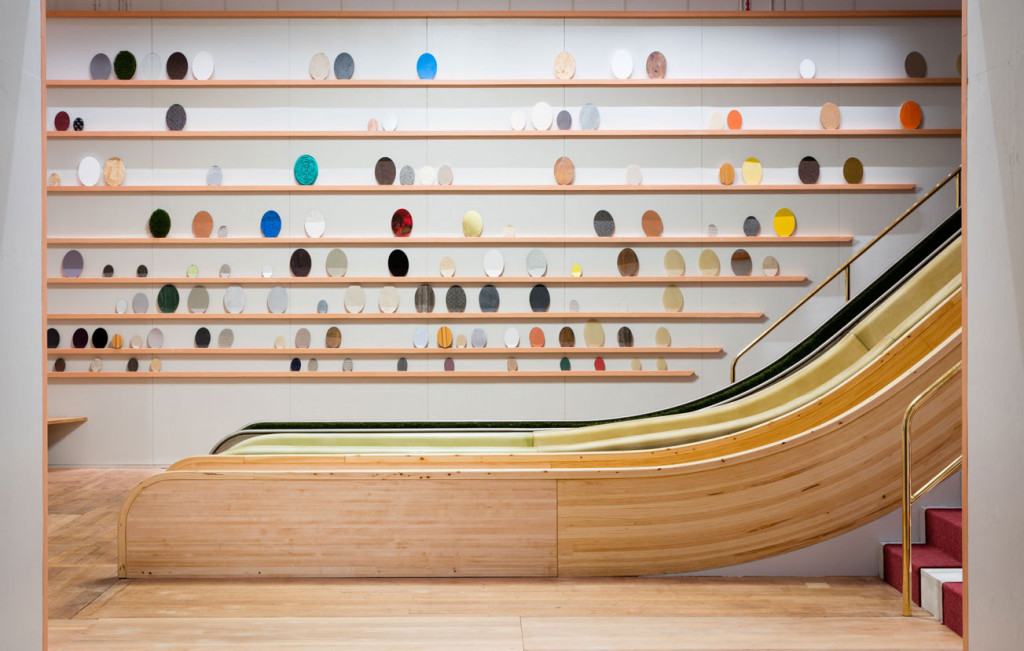When we open our inspirational Wonderlab: The Statoil Gallery on 12 October 2016, we will be able to double the number of schoolchildren who visit for free and further extend our reach beyond traditional museum audiences with a series of important charity partnerships.
We are delighted to announce that we will be working with IntoUniversity, Gingerbread and Family Action to increase free access to Wonderlab for disadvantaged young people, children and families in difficult circumstances, and we look forward to welcoming many new visitors to our Museum.
Wonderlab is an interactive gallery unlike any other, revealing the beauty of the maths and science that shape our lives. The gallery has with 50 interactive exhibits – from a Chemistry bar to three giant friction slides – a Royal Institution-style lecture space and three live demonstration areas, creating a spectacular, thrilling and inspiring place to visit.

Because the new gallery will carry a modest charge for visitors (Adult £8, Child £6, and an annual pass at £39 for a family of four) we can sustain the live shows, interactive exhibits and Explainers while retaining free access for school groups. As Wonderlab is 60% bigger than its predecessor, we also now have the space to double the number of schoolchildren who visit for free as part of an educational visit from 100,000 to 200,000 in the next three years.
Our most diverse audiences are school groups, so we know that by focusing on this we are doing even more to inspire future generations of scientists, mathematicians and engineers, irrespective of their background. We will also organise home educator days in Wonderlab and our Outreach team will distribute tickets to many of the schools they visit.
The likes of Professor Stephen Hawking, Dr Helen Sharman (the first Briton in space) and James Lovelock have been inspired by the Museum in the past. Today, the Science Museum is the most visited museum in the UK (and probably Europe) for booked school groups – we welcomed 380,000 young people last year.
If we look across the Science Museum Group (the Museum of Science and Industry in Manchester, the National Railway Museum in York and the National Media Museum in Bradford) the number of young people in booked educational groups rises to 507,000, with another 100,000 reached through our Outreach team last year.
The Group has recently been awarded the contract to run the Trans-Pennine STEM Ambassador hub which co-ordinates the work of over 2000 volunteers to inspire tens of thousands of school children to think positively about pursuing a STEM career.
We are now the UK’s STEM inspiration powerhouse.
Our aim is to ignite curiosity in science and in doing so help secure the future of this country which needs to draw upon the talents of all our young people to solve the big challenges that our society faces.
This work is underpinned by our pioneering research on the theory of Science Capital (science-related qualifications, interest, literacy and social contacts) with Kings College London, to better understand how young people from all backgrounds engage with science and how their engagement might be supported.
Research shows that the more science capital a young person has, the more likely they are to study science post-16 and to see science as ‘for me’. Yet national survey data shows that 27% of all 11 to 15 year olds have low science capital, particularly those from disadvantaged schools and communities.
This limits their opportunities and outcomes in life, and contributes to the shortfall in young people in the UK choosing STEM subjects. Science capital can help us to understand what influences and shapes people’s attitudes towards science (whether they see science as for them or not) and sits at the core of our approach to designing learning programmes across the Science Museum Group.
October 12 marks the beginning of a new chapter in the Science Museum’s history of inspiring future generations. We look forward to extending a warm welcome to more diverse audiences than ever before.
Tom O’Leary is Director of Learning for the Science Museum Group.